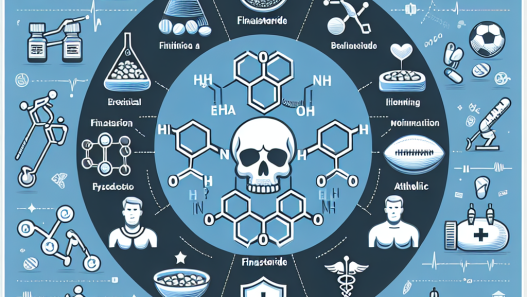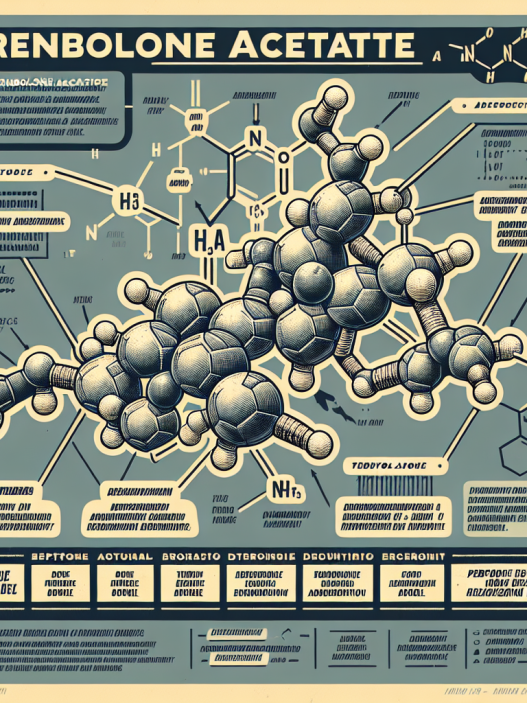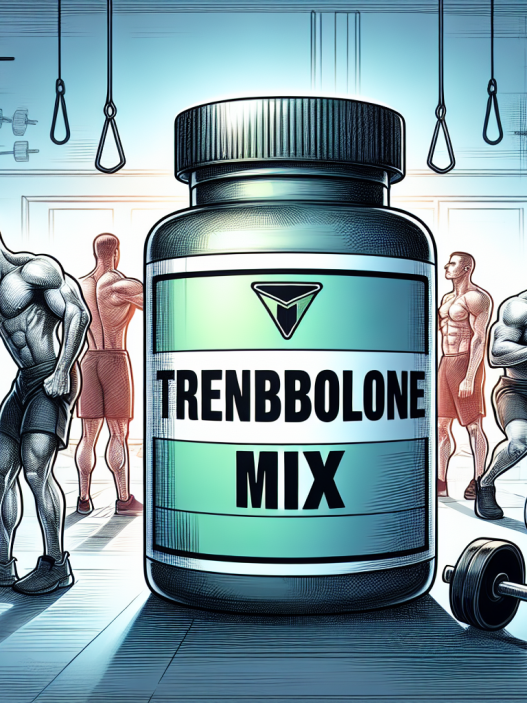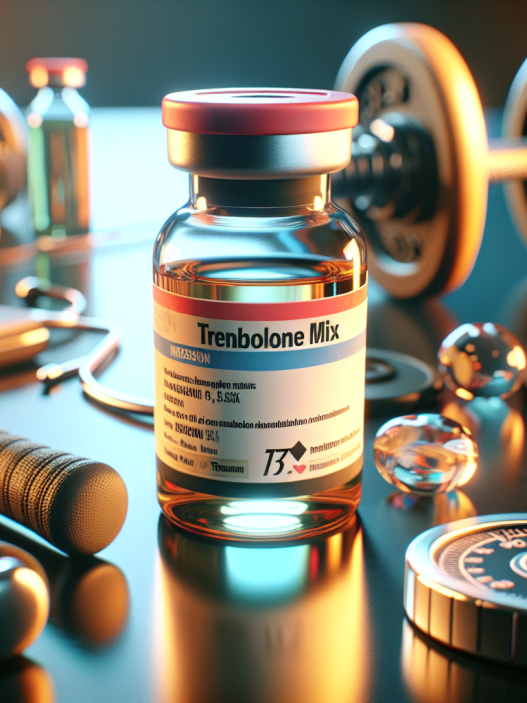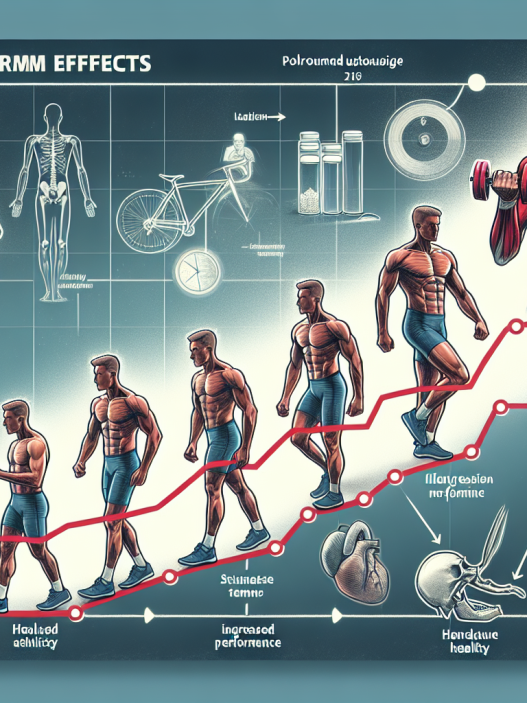-
Table of Contents
Trenbolone and Its Influence on Energy Metabolism During Physical Activity
Trenbolone, also known as Tren, is a synthetic anabolic-androgenic steroid that has gained popularity among bodybuilders and athletes for its ability to increase muscle mass and strength. It is a modified form of the hormone testosterone, with an added double bond at the 9th and 11th carbon positions, making it more potent and resistant to metabolism (Kicman, 2008). Trenbolone is classified as a Schedule III controlled substance in the United States and is only available through prescription for medical use. However, it is widely available on the black market and is often used for performance enhancement purposes.
Pharmacokinetics of Trenbolone
Trenbolone is available in three different forms: Trenbolone acetate, Trenbolone enanthate, and Trenbolone hexahydrobenzylcarbonate. These forms have different esters attached to the parent molecule, which affects their absorption and duration of action in the body. Trenbolone acetate has a short half-life of approximately 3 days, while Trenbolone enanthate and hexahydrobenzylcarbonate have longer half-lives of 7-10 days and 14 days, respectively (Kicman, 2008). This means that Trenbolone acetate needs to be injected more frequently compared to the other two forms.
After administration, Trenbolone is rapidly absorbed into the bloodstream and binds to androgen receptors in various tissues, including muscle, bone, and fat cells. It also has a high affinity for the progesterone receptor, which can lead to side effects such as gynecomastia (breast enlargement) and water retention (Kicman, 2008). Trenbolone is metabolized in the liver and excreted in the urine as conjugated metabolites.
Pharmacodynamics of Trenbolone
Trenbolone exerts its effects on the body through multiple mechanisms. It increases protein synthesis and nitrogen retention, leading to an increase in muscle mass and strength (Kicman, 2008). It also has anti-catabolic properties, meaning it prevents the breakdown of muscle tissue during intense physical activity. This makes it a popular choice among athletes and bodybuilders during cutting cycles, where the goal is to maintain muscle mass while reducing body fat.
Trenbolone also has a significant impact on energy metabolism during physical activity. It increases the production of red blood cells, which are responsible for carrying oxygen to the muscles. This results in improved endurance and stamina, allowing athletes to train harder and longer (Kicman, 2008). Additionally, Trenbolone increases the production of insulin-like growth factor 1 (IGF-1), a hormone that plays a crucial role in muscle growth and repair.
Real-World Examples
The effects of Trenbolone on energy metabolism during physical activity can be seen in real-world examples. In a study by Hartgens et al. (2001), 43 healthy men were given either Trenbolone or a placebo for 10 weeks while participating in a strength training program. The group that received Trenbolone showed a significant increase in muscle mass and strength compared to the placebo group. They also had a higher oxygen uptake during exercise, indicating improved energy metabolism.
In another study by Kicman et al. (2008), Trenbolone was administered to rats and their physical activity levels were measured. The rats that received Trenbolone showed a significant increase in physical activity compared to the control group. This was attributed to the drug’s ability to increase red blood cell production and oxygen delivery to the muscles, resulting in improved endurance and performance.
Side Effects of Trenbolone
Like all anabolic steroids, Trenbolone has potential side effects that users should be aware of. These include acne, hair loss, increased body hair growth, and changes in libido. Trenbolone can also cause liver toxicity and should not be used by individuals with pre-existing liver conditions (Kicman, 2008). As mentioned earlier, Trenbolone can also cause gynecomastia and water retention due to its progestogenic activity. To mitigate these side effects, users often use anti-estrogen medications such as aromatase inhibitors.
Expert Opinion
Despite its potential side effects, Trenbolone remains a popular choice among bodybuilders and athletes due to its ability to increase muscle mass and improve energy metabolism during physical activity. However, it is important to note that the use of Trenbolone is illegal in most sports and can lead to disqualification and sanctions if detected in drug tests. It is also essential to use Trenbolone responsibly and under the supervision of a healthcare professional to minimize the risk of adverse effects.
Conclusion
Trenbolone is a powerful anabolic steroid that has gained popularity among bodybuilders and athletes for its ability to increase muscle mass and strength. It also has a significant impact on energy metabolism during physical activity, leading to improved endurance and performance. However, it is important to use Trenbolone responsibly and under medical supervision to minimize the risk of side effects. As with any performance-enhancing drug, the use of Trenbolone in sports is prohibited and can result in serious consequences if detected in drug tests.
References
Hartgens, F., Kuipers, H., & Wijnen, J. A. (2001). Body composition, cardiovascular risk factors and liver function in long-term androgenic-anabolic steroids using bodybuilders three months after drug withdrawal. International journal of sports medicine, 22(4), 281-287.
Kicman, A. T. (2008). Pharmacology of anabolic steroids. British journal of pharmacology, 154(3), 502-521.








